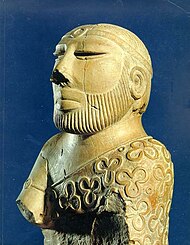Soomra dynasty | |||||||||
|---|---|---|---|---|---|---|---|---|---|
| 1026–1351 (Continued in exile until 1440 in Umerkot) | |||||||||
| Status | Vassals of the Abbasid Caliphate (1026-1351)[1] | ||||||||
| Capital | Thari (in present-day Badin District in Sindh) | ||||||||
| Official languages | Persian[2] | ||||||||
| Common languages | Sindhi (native language) Arabic (liturgical language) | ||||||||
| Religion | Shia Ismaili | ||||||||
| Government | Monarchy | ||||||||
| History | |||||||||
• Soomra dynasty begins | 1026 | ||||||||
• Soomra dynasty ends | 1351 (Continued in exile until 1440 in Umerkot) | ||||||||
| |||||||||
| Today part of | Sindh | ||||||||
| History of Pakistan |
|---|
 |
| Timeline |
The Soomra dynasty was a late medieval dynasty of Sindh ruled by the Soomro tribe of Sindh, and at times adjacent regions, located in what is now Pakistan.[3]
- ^ Stanton, Andrea (2012). Cultural Sociology of the Middle East, Asia, & Africa, Volume 4. SAGE Publications. p. 110. ISBN 978-1-4129-8176-7.
- ^ "Sind Quarterly". Mazhar Yusuf. 11 November 1981 – via Google Books.
- ^ "The Arab Conquest". International Journal of Dravidian Linguistics. 36 (1): 91. 2007.
The Soomras are believed to be Parmar Rajputs found even today in Rajasthan, Saurashtra, Kutch and Sindh. The Cambridge History of India refers to the Soomras as "a Rajput dynasty the later members of which accepted Islam" (p. 54 ).
